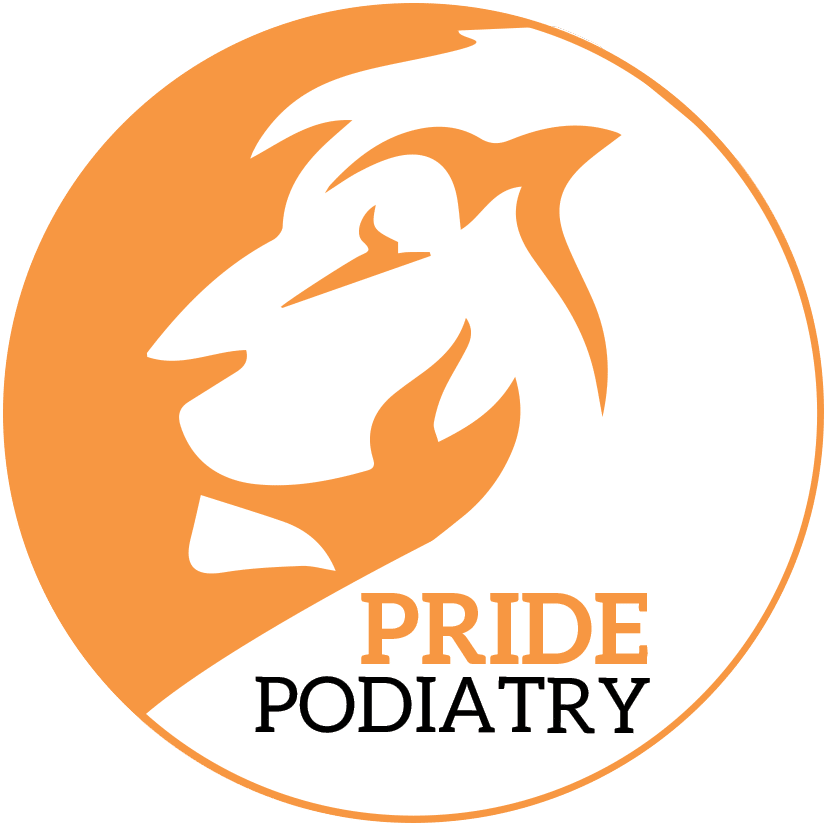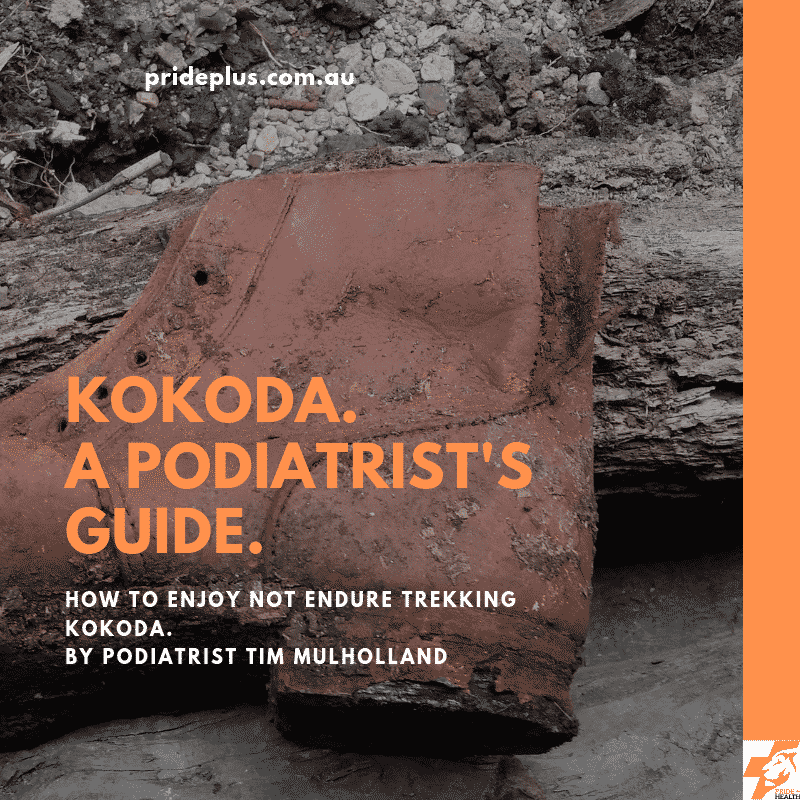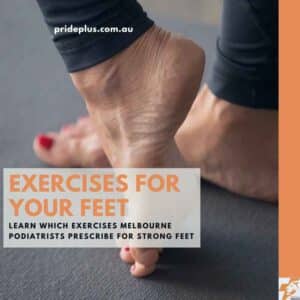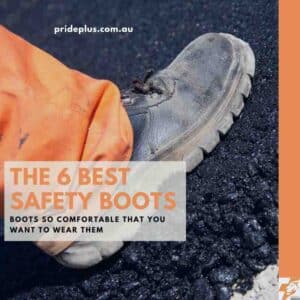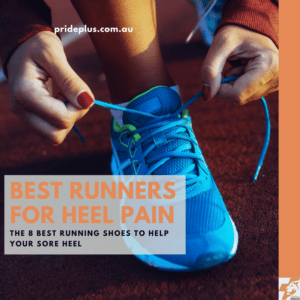Kokoda. The word itself has a meaning to many Australians that evokes feelings of pride and passion, loss and struggle. Our PNG neighbours to the north have a rich shared history with many Australians and the pilgrimage to trek the Kokoda track is taken up by hundreds each year.

In 2015 I was lucky enough to get the chance to join in on a trek as a birthday gift. My experience on the track was overwhelming, emotional, enjoyable, amazing. Honestly my words cannot describe the actual act of completing the trek as well as the feelings it stirs up on the way. What I am hoping to provide here is a Podiatrists guide to preparation for walking Kokoda. We will focus on what Podiatrists do best, looking at the world from the ground up.
If you’re planning a big trek and need some advice you can book in with me and my team of podiatrists, exercise physiologists and physiotherapists for a free online (telehealth) session to get started off on the right foot.
Book your first session of telehealth – free here.
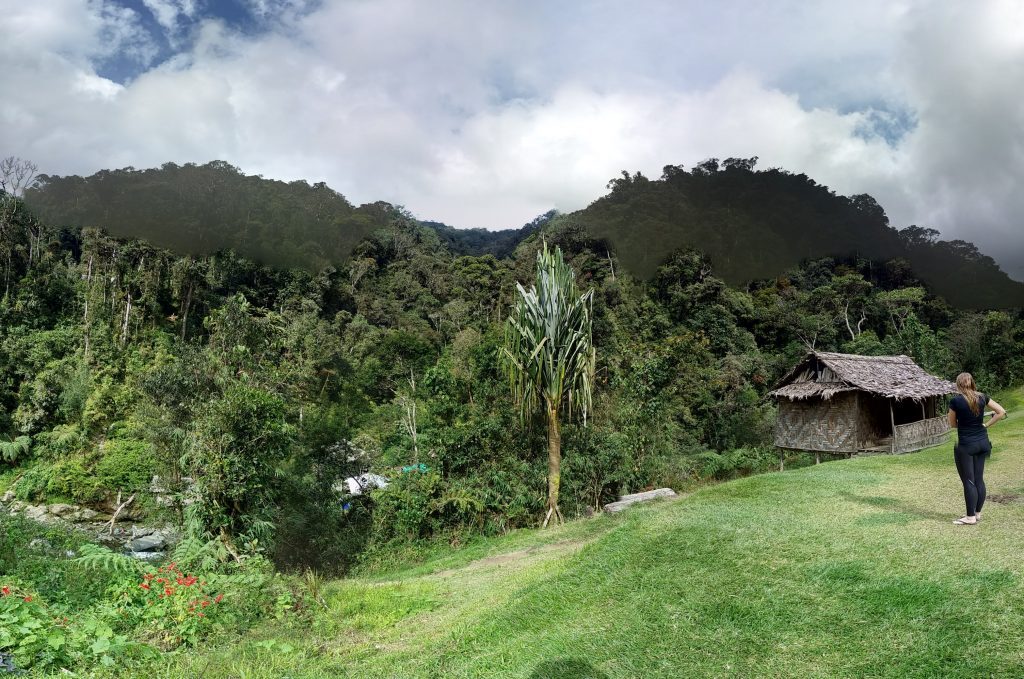
When deciding whether trekking Kokoda is for you there’s a few considerations relating to physical health and capacity. Kokoda is tough. You need a solid fitness base and expert guidance. For fitness seeing an EP (Exercise Physiologist) is the ideal place to start. Regarding a guide, I would highly recommend the team at Australian Kokoda Tours (lead by Mick O’Malley). Australian Kokoda Tours have thorough and inclusive trek packages, an incredible team of local PNG guides working alongside Mick and an exceptional safety record.
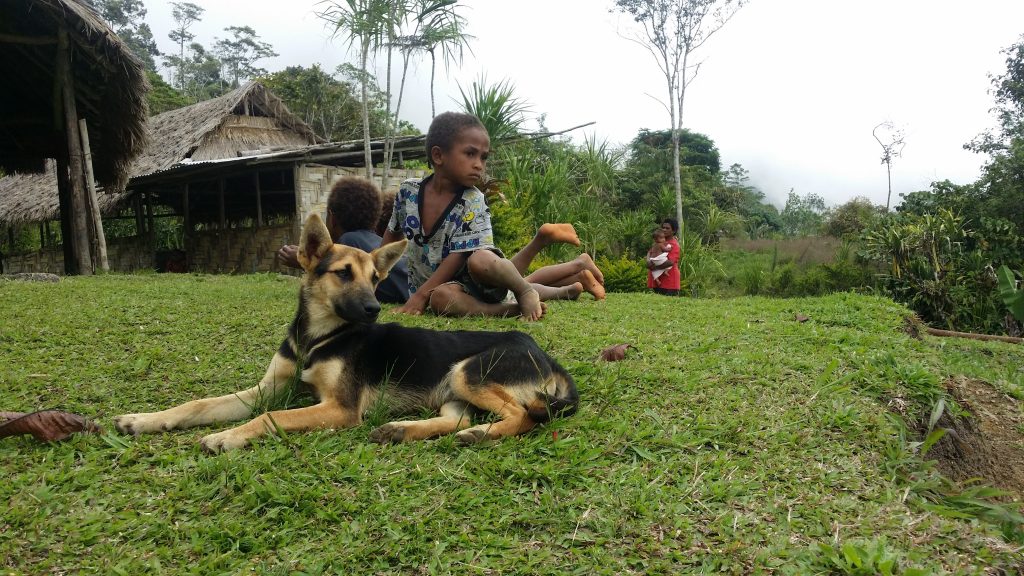
Preparation
Boots
When the Australian and Japanese were fighting eachother in New Guinea in the second world war both sides’ footwear was hardly up to the task and most early 1900’s era leather boots rotted within days of entering the jungle and the Australians and Japanese joined the locals in going barefoot.
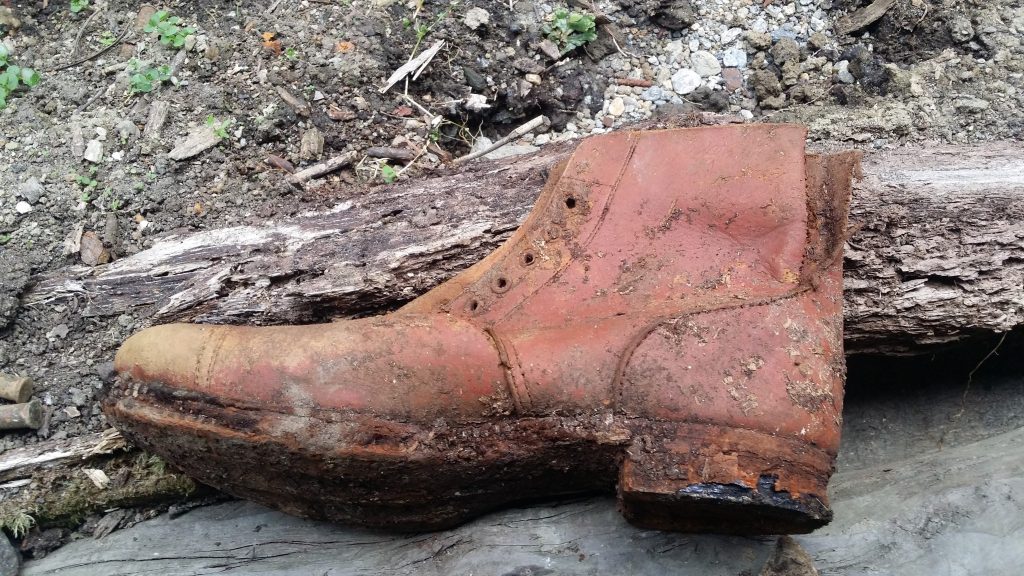
Luckily for us there has been significant advances in hiking boot technology since then and our modern feet can stay healthy and protected in excellent footwear.
Boot Rules
Fit
This is the most obvious rule but also the most overlooked. Your boots need to fit. They need to fit your feet and your hiking socks in a variety of conditions. Our feet are smaller in the morning and larger in the evening. For those with venous/lymphatic conditions there can be very large fluctuations in foot and ankle size from swelling throughout the day or in hot/humid weather (Kokoda weather warning – it’s always hot and humid).
-
- Try you boots on when your feet are at their largest, usually later in the day
- Take your technical hiking socks you plan on wearing on the hike when trying on boots
- If you’re wearing compression stockings on the hike, wear them and your hiking socks
- See an expert boot fitter. In Melbourne the team at Paddy Pallin are really good at fitting and assisting you with your hiking boot selection
Style
Not so much style as in the catwalk runway, but style of boot. There are 3 broad categories to consider.
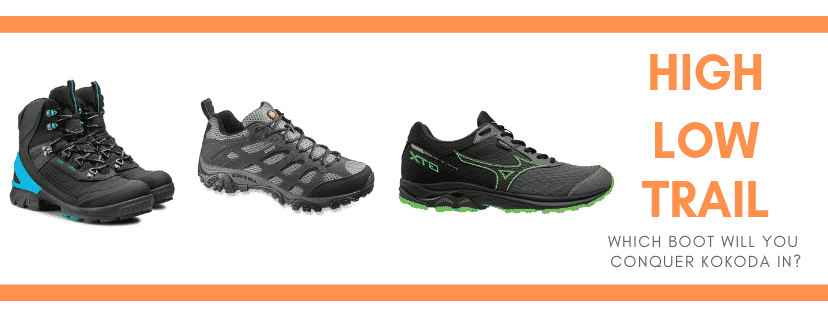
High Top Hiking Boot
Your classical hiking boot that rises to just above the ankle boot. This style of boot is for someone wanting protection at the ankles from stray sticks and stones that flick up, potentially an increase in protection from wildlife (there are snakes in PNG), and a higher water-line; the level at which water rises up and into a boot when crossing streams, stepping in puddles. These boots are heavier and more rigid and people with issues with leg and ankle swelling will need to be careful with boot selection.
Low Top Hiking Boot
A lighter, more modern version of the boots above. Great for people wanting to move fast, have good ankle stability and happy to make the trade off regarding weight and getting wet.
Trail Running Shoe
Trail runners are built for running off road. They are the lightest of the options and really sacrifice ankle protection and likelihood of wet feet for comfort and speed. Those of you looking at trail runners for Kokoda will likely be the super fit and having a porter carrying the bulk of your gear as straight off the shelf trail runners are not ideal for carrying extra load on your back. If you’re considering a trail runner I’d suggest booking in for a foot assessment with an expert podiatrist prior and checking out the options available.
Wear ‘em in
Buy your boots early and wear them. I personally spent 6 months prior to heading to Kokoda wearing my Hiking Boots to the footy, during training hikes, to the supermarket. It’s not a fashion statement but the work you put into breaking in your boots will pay off. Also, if you have made a mistake with your selection you will have time to correct it.
Material
These days Gore-Tex lining is available in all boot and trail running shoes. Get a pair with Gore-Tex.
Upper material varies from mesh, synthetics and leather. Leather + Gore-Tex will be the most waterproof but heavy and for a lot of us overkill. A lighter synthetic upper with a Gore-Tex lining is my personal recommendation.
Socks
Socks might be the single most important decision to make prior to heading to PNG. Really. Your feet will get wet, and how your socks handle the wetness (it’s the essence of moisture;) will be the difference between a pleasant trek and a horrible blister filled nightmare. Firstly, cotton socks are a no. They hold moisture and take too long to dry. That leaves technical merino wool and technical synthetic socks.
Merino wool is by far the superior thermo-regulator, if you’re going to be hiking somewhere cold after Kokoda definitely go Merino. The wool is a great insulator and wicks moisture to the shoe where it can evaporate through the pores of the Gore-Tex to dry.
Technical synthetic socks dry super quick which is fantastic, you can hang up your spare pairs in the huts and tents overnight or on your pack if it’s not raining. They also have extra padding in certain areas like the heel and forefoot just like a good quality merino wool sock will. Their drawback, they can increase sweating particularly those with hyperhidrosis.
My recommendation, go for a technical merino wool sock. Wigwam do a wonderful sock which will last years if treated right.
When purchasing socks you will need at least 3 for your trek, I personally used 4 (I’m a big sweater).
Orthotics
While boots and socks are a necessity for Kokoda, orthotics are foot and person dependent so there’s no hard and fast rules. What an orthotic can do is improve the fit of a hiking boot, decrease the load on at risk structures and reduce the risk of blistering. Custom foot orthotics prescribed by expert PridePlus podiatrists can make your life much easier on the track.
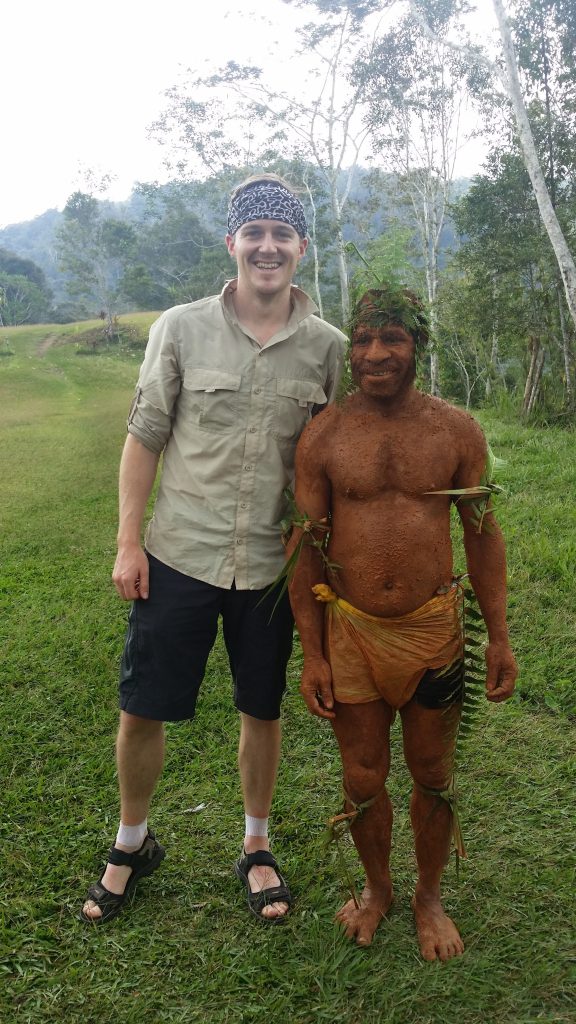
Fitness
The Kokoda track is 96Km of up, down, up, down, rivers, hills, mud, up, down. It goes without saying you need to be fit. Prepare with expert guidance. Australian Kokoda Tours have a wonderful team who have training hikes and exercise plans. For those looking at other tours you should see an expert EP for guidance. Your training plan should include plenty of strength work, plenty of Km and plenty of laughs. Training is a fun activity, not a chore. I personally enjoyed long walks with headphones in chatting with mates from all over Australia or listening to audiobooks and podcasts.
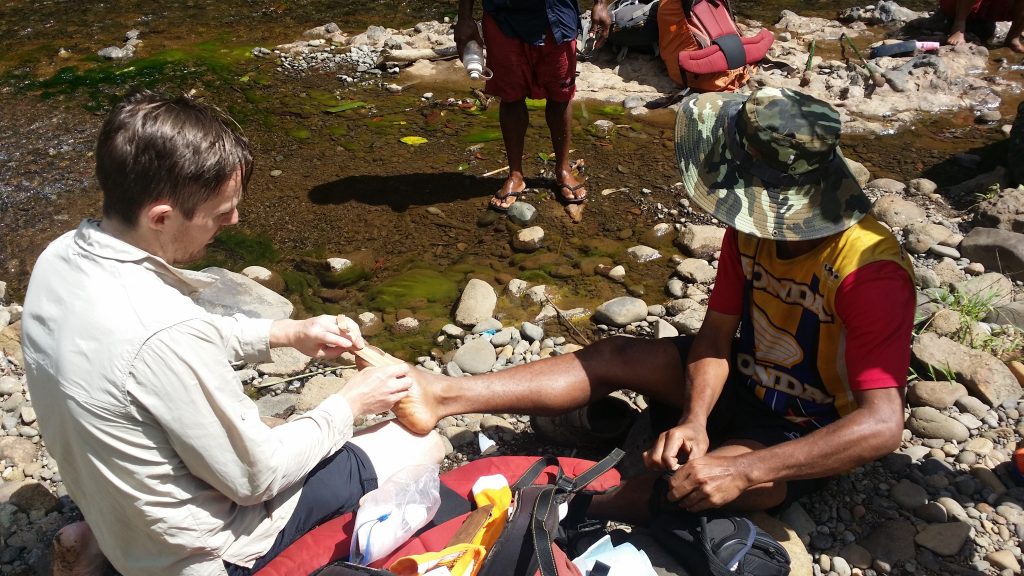
First Aid
Even the most prepared trekker who has reduced their risk of injury with good selections of boots, socks, orthotics and a fitness base can have accidents occur. A well stocked first aid kit is essential. This advice is for the foot, ankle and leg first aid. You will still need to ensure you have all the other first aid items (sun screen, antibiotics, antiemetics, gastro meds etc).
Sports Tape
A rigid sports tape can be used for strapping at risk ankles or after a sprain. You can also strap feet to change the way they move to optimise load on at risk structures. There’s 100’s of techniques of strapping. Best see an expert podiatrist to learn what strapping would be ideal for your foot type.
Hypafix Tape
A soft, hypoallergenic cloth tape that can be used to prevent and treat blisters. For people with allergies to adhesive sports tape you can use Hypafix on the skin first to provide a barrier and strap over the top with rigid (Elastoplast) tape.
Betadine
The best antiseptic. Use it on any breaks in skin to reduce your risk of infection. The PNG jungle has all sorts of weird and wonderful bugs foreign to our bodies so prevention of infection is absolutely paramount. Use betadine liberally and often on any breaks in skin then cover with appropriate dressings and hold in place with hypafix and or sports tape.
Finally enjoy it. It’s the best.
